The Singapore Flag’s Performance in 1st Quarter of 2016
Thanks to the collective efforts of our stakeholders and seafarers, the Singapore flag fared better under Port State Control (PSC). In the first quarter of 2016, there were 10 PSC detentions, compared to 18 during the same period in 2015. Most of the detentions are still taking place in Australia and the United States.
Performance of Singapore Ships under PSC
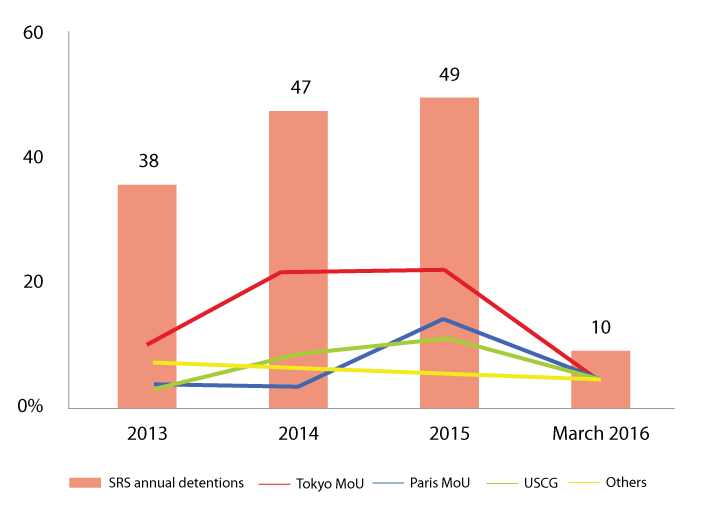
The Singapore flag continues to do well in the following major PSC Regimes
- Under the Tokyo MoU Regime, the detention ratio of Singapore ships was 0.37% against the regime’s average of 3.18%.
- Under the Paris MoU Regime, the detention ratio of Singapore ships was 1.17% against the regime’s average of 3.49%.
Tokyo MoU - Annual Detention Ratio

Paris MoU - Annual Detention Ratio

Most Common Causes of Ship Detentions in the 1st Quarter of 2016
Majority of the ship detentions were caused by common detainable deficiencies as shown below:
- Fire Safety
- Ship’s crews not able to carry out satisfactory fire drills
- Defective fire detection and alarm system
- Use of non-approved pumping arrangement to transfer leaked cargo oil in pump-room to slop tank
- Failure of the crew to report defective cargo piping and cargo oil leakage in the pump-room to the port authorities
- Emergency fire pump not able to operate on emergency source of power
- Pollution Prevention
- Defective oily water separator
- Defective oil discharge monitoring and control system
- Life Saving Appliances
- Rescue boat engine not able to be started
- Freefall lifeboat secured to davit with additional wire lashings
- Certificate and Documentation
- Expired interim Maritime Labour Certificate
- Expired Seafarers’ Employment Agreements
- Structural Conditions
- Defective hydraulic pump for power-operated sliding door
- Cargo Operations Including Equipment
- Inadequate means to measure the temperature of cargo (coal) at the bottom of the cargo hold
- Labour Conditions
- Crew did not wear appropriate personal protective equipment (e.g. safety shoes) in engine room and on deck during cargo operations
Detention Deficiencies by Category in 1st Quarter 2016
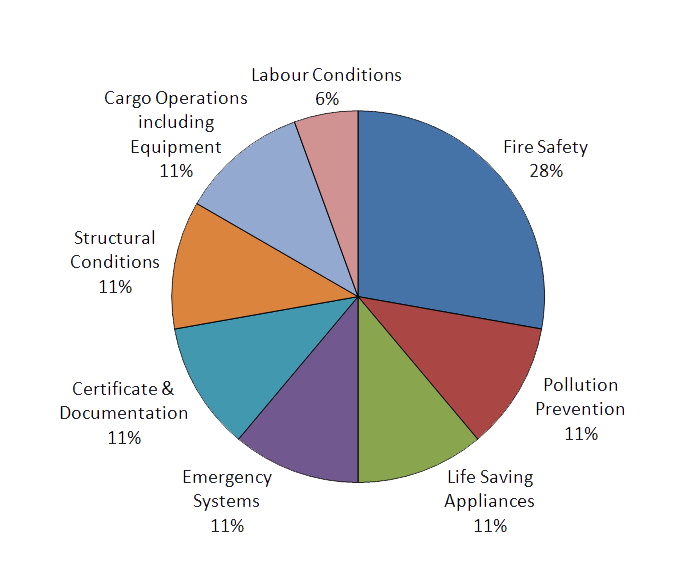
Detention Deficiencies in 1st Quarter 2016
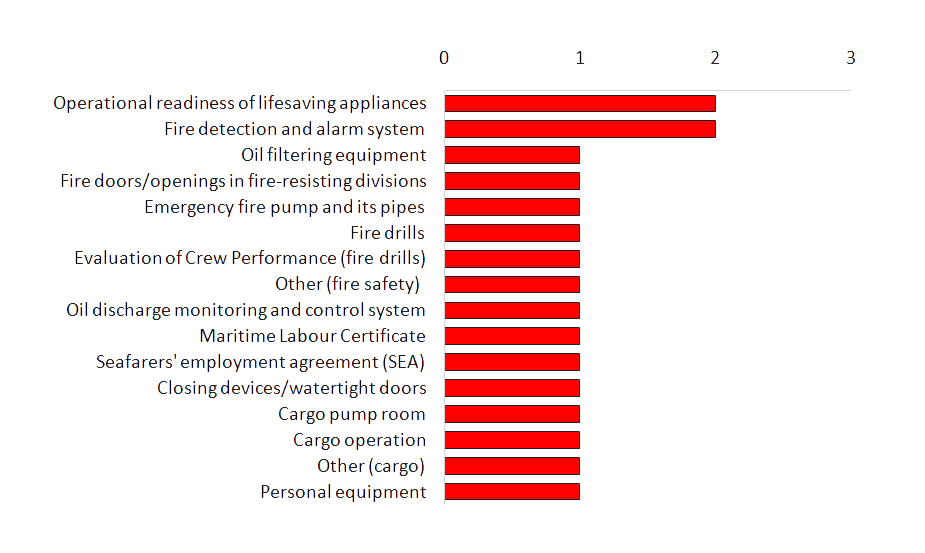
FSC Overseas Survey
As a responsible flag administration, MPA is committed to maintaining a quality flag. MPA exercises rigorous Flag State Control (FSC) on Singapore ships, regardless of their geographical location. This is to ensure that they adhere to international and national standards, or are well maintained and safely operated to prevent incidents or accidents. During inspections, MPA surveyors also assess the safety management standards of the ships and their companies, and carry out oversight of the work performed by the Recognised Organisations (ROs).
Most FSC inspections take place in Singapore waters because majority of Singapore ships call at their home port. However, MPA may also conduct FSC inspection on Singapore ships overseas if they do not call Singapore, taking into account the ship’s profile, performance and safety track records of the ships and their companies, as well as the ship’s trading pattern.
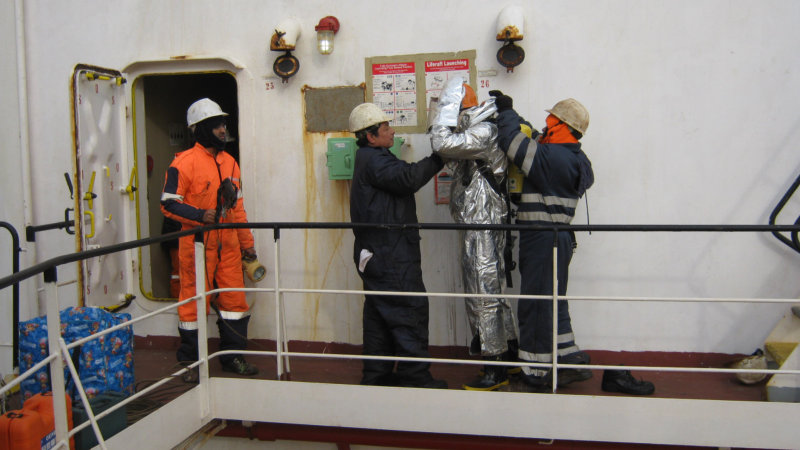
Crew dons fire-fighting equipment
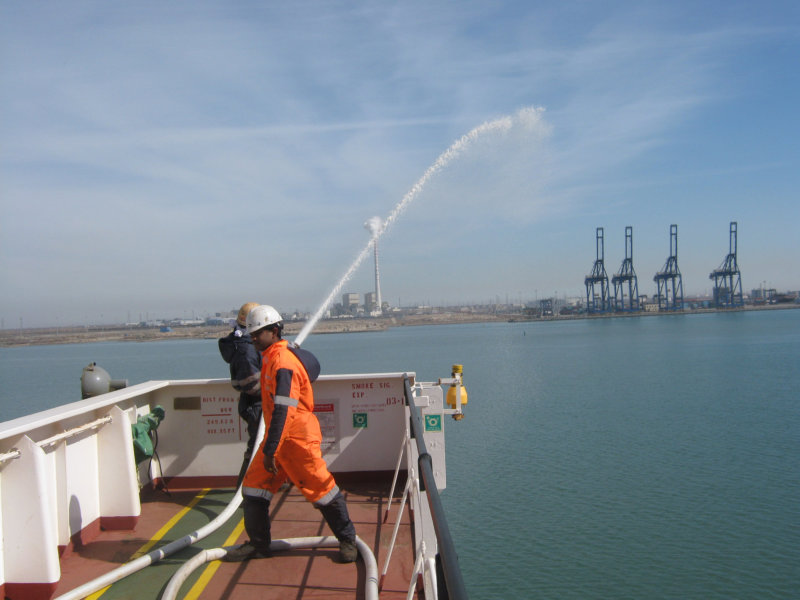
Testing of emergency fire pump
Recently, a 17-year-old Singapore-registered bulk carrier was inspected under FSC at the port of Caofeiden, China in February this year. The cooperation of the company and their agent enabled our surveyor to conduct an expanded FSC inspection overseas.
Besides a thorough inspection of the ship’s structure, machinery and equipment within the time available, the implementation of the safety management system on board was also verified using a process-based approach. Key crewmembers were interviewed, records were checked, and operational tests and drills were requested to be conducted to ensure that they are familiar with their normal and emergency duties. The surveyor also assessed the proficiency of the crew in carrying out abandon-ship and fire drills. The ship’s crew were very cooperative and motivated during the inspection. At the end of it, the ship was found to be substantially compliant with relevant standards. An inspection report was issued to the master for deficiencies that had to be rectified promptly. They include ISM-related deficiencies which require companies to improve the quality of procedure and instructions for the inspection, testing and maintenance of fire fighting and pollution prevention equipment on board.
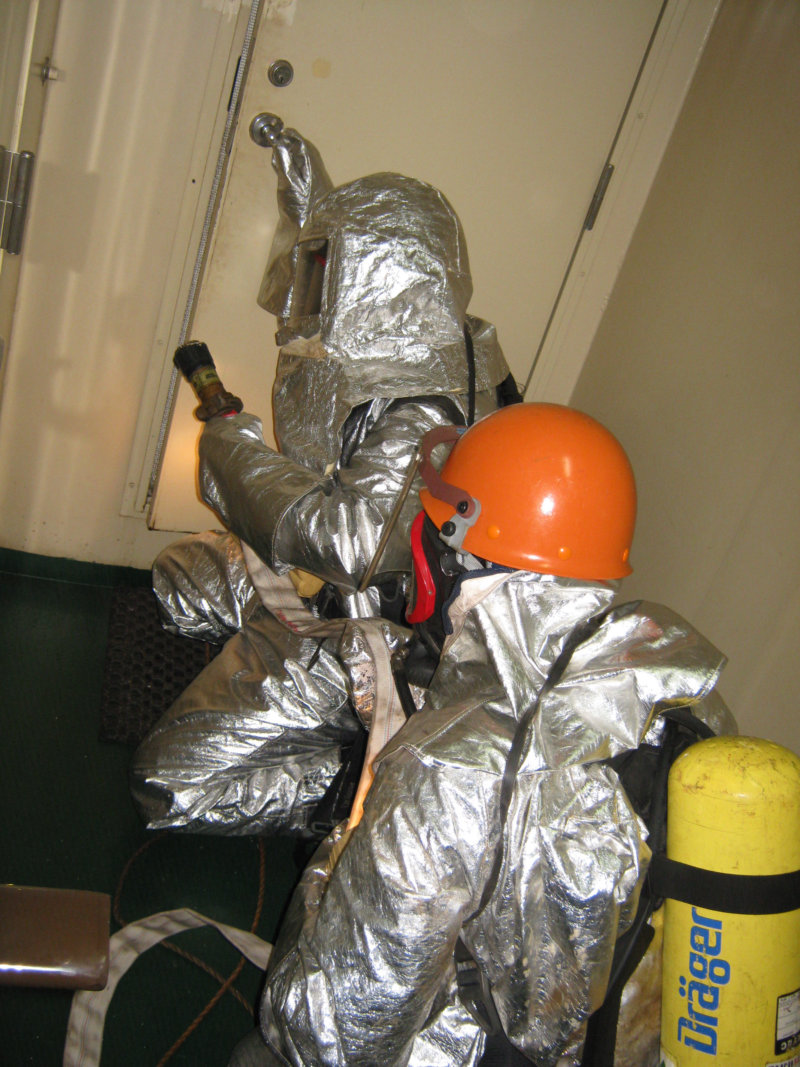
Galley fire-fighting drill
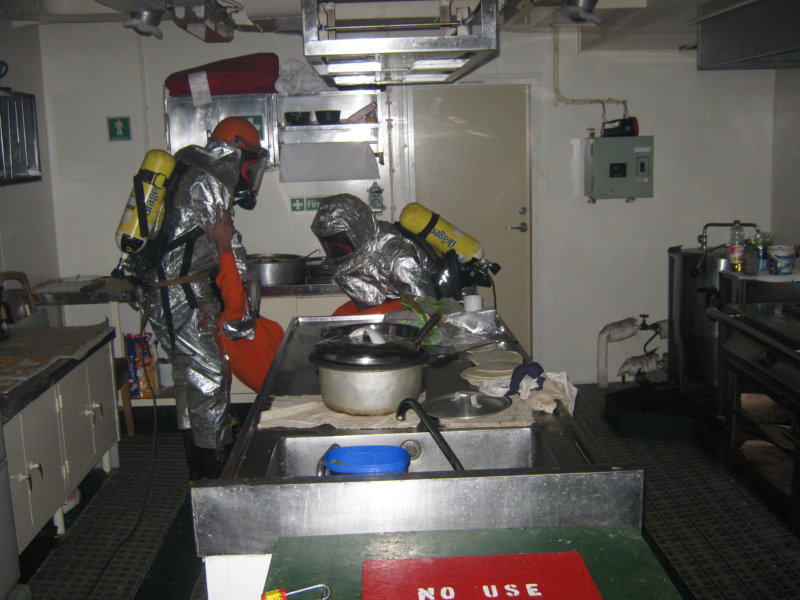
Rescue operation drill
